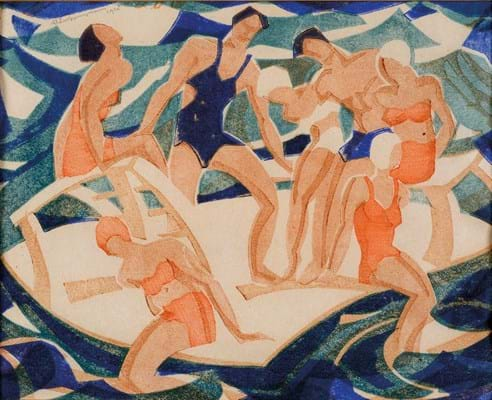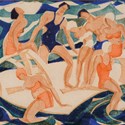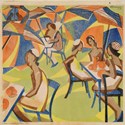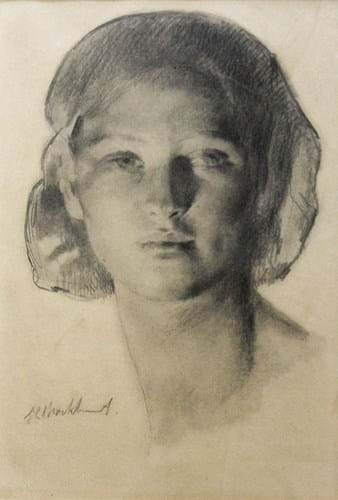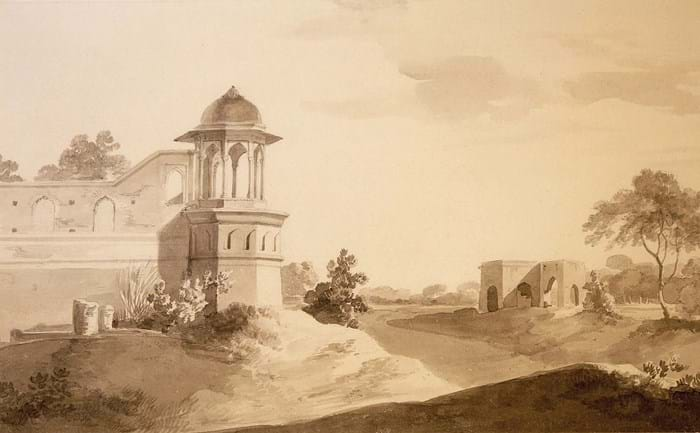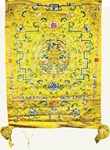The most eye-catching results on January 19 came from a clutch of rather faded linocut prints by Walter Greengrass (1896-1970), one of the less-established stars of the Grosvenor School.
A curator at the Victoria and Albert Museum in London, whose pre-Grosvenor works consisted primarily of wood engravings, Greengrass was inspired to embrace the colour linocut by his teacher Claude Flight (1881-1955).
Similar to Flight, Greengrass focused on scenes of speed and movement, but was unable to cash in on his creations in the same way.
“There is nothing about his work that is poorly executed, he just doesn’t have that tremendous allure that the higher-ranking names such as Flight, Cyril Power and Sybil Andrews seem to attract,” said Richard Kay, director at Lawrences.
However, demand for those more familiar Grosvenor School artists has softened slightly since the run of record-breaking sales and prices several years ago. The market’s high point came in June 2012 when Lockdales of Ipswich set the record for a Grosvenor School work at £96,000 for Power’s Speed Trial.
The quartet of linocuts by Greengrass at Lawrences were consigned from a vendor in Devon who paid a few hundred pounds more than 30 years ago to acquire them.
All in limited editions, as is often the case with delicate linocuts, they date from the early 1930s when the Grosvenor School was at its peak.
Morning scene breaks record
Leading the group was Seaside Morning, an 8 x 10in (20 x 25cm) work depicting bathers at the seaside. Considered exceptionally rare, possibly even the first time an example from the series had appeared at auction, it sold for £12,000 to an overseas buyer against a guide of £2500-3500.
The result set a new high for the artist at auction, beating Lawrences’ own record of £9600, fetched back in July 2008 for a linocut titled Rugby.
Two further linocuts were secured by the same buyer: The First Fence and Tea Under the Umbrellas, both selling for £10,000 each, against guides of £2000-3000 and £3000-5000 respectively.
“In light of their condition issues, I had set what I thought were realistic estimates. I didn’t expect them to make three times that in some cases,” said Kay.
The strong performance indicates a growing demand for the next tier of Grosvenor School artists, whose works carry all the hallmarks of a top name without the hefty price tag. The market has already experienced a boost for Edith Lawrence (1890-1973), whose prices have increased over the last few years.
Draughtsman's skill
Elsewhere among the works on paper at Lawrences, a pencil portrait study of an unidentified sitter by Gerald Brockhurst (1890- 1978) soared to £5000 against a conservative estimate of £400-600.
The 10 x 7in (27 x 18cm) wash and brushpoint en grisaille attracted more enquiries than any other lot in the sale, said Kay.
“The subtlety of the drawing and the modelling, particularly on the left cheek is absolutely outstanding – it shows his skill as a draughtsman par excellence,” he said.
Interest in the portraitist, who is best known for his depictions of beautiful, idealised women, has been on an upward trajectory. And it was for this reason the vendor had decided to part with it. Other surging prices for his drawings include a multi-estimate £32,000 pencil work of a reclining nude taken at Bonhams London in March last year.
Indian drawing
Feeding the market for Indian topography was a well-preserved 11½ x 18½in (29 x 47cm) grey wash and pencil drawing by the English artist William Daniell (1769-1837).
Depicting the King’s Garden in Allahabad in northern India, the work had been acquired by the vendor from Edinburgh auction house Lyon & Turnbull in 2009 for £720.
However, at Lawrences it sparked a bidding battle between Indian collectors and a bidder in France, selling to the latter for £7600, well above its £500-700 guide.


